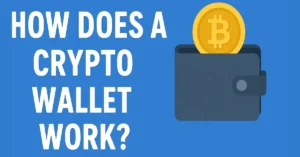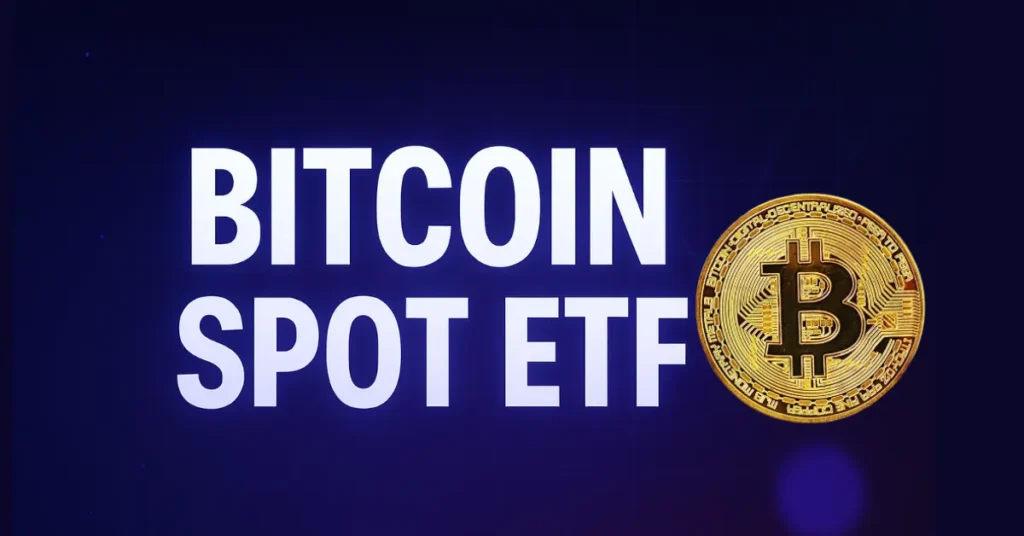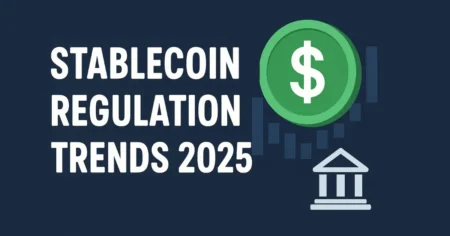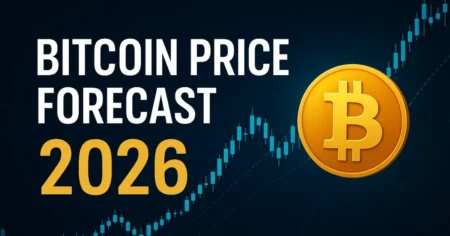Introduction to Bitcoin Spot ETF
Over the past decade, Bitcoin has transformed from an experimental digital currency into a serious financial asset recognized by both retail and institutional investors. With its growing influence, regulators, asset managers, and investors have searched for ways to integrate Bitcoin into traditional investment vehicles. One of the most anticipated developments has been the introduction of the Bitcoin Spot ETF.
A Bitcoin Spot ETF allows investors to gain exposure to Bitcoin without having to directly own or manage the cryptocurrency themselves. Unlike buying Bitcoin through an exchange or storing it in a digital wallet, a Spot ETF functions just like a stock or traditional ETF. Investors can buy shares of the ETF through regular brokerage accounts, making it far more accessible to the average investor.
But why is this important? For years, Bitcoin has been considered a disruptive force in finance, yet it remained outside the reach of many mainstream investors due to technical and regulatory hurdles. A Spot ETF bridges that gap by placing Bitcoin within a familiar investment framework.
To understand its significance, let’s first differentiate it from other forms of Bitcoin-based ETFs and then explore how it works in the financial ecosystem.
The Evolution of Bitcoin in the Financial Market
Bitcoin’s journey into mainstream finance has been anything but smooth. When it first appeared in 2009, it was dismissed by most economists and regulators as an experimental digital toy. It lacked institutional backing, and the idea of a decentralized, borderless currency clashed with traditional banking models.
As the years went by, Bitcoin gained traction, not only among tech enthusiasts but also among investors seeking an alternative asset class. By 2013, the first major wave of interest came when Bitcoin crossed $1,000 for the first time. However, volatility, security breaches at crypto exchanges, and skepticism from regulators kept many investors away.
The 2017 bull run pushed Bitcoin into the headlines, as prices neared $20,000. This surge prompted renewed interest in developing regulated financial products tied to Bitcoin. Yet, U.S. regulators, particularly the Securities and Exchange Commission (SEC), repeatedly rejected applications for Bitcoin ETFs, citing concerns about market manipulation and lack of transparency.
Despite setbacks, institutional interest has only grown. Hedge funds, banks, and asset managers started exploring Bitcoin as part of diversified strategies. The launch of Bitcoin futures contracts on the Chicago Mercantile Exchange (CME) in 2017 was a pivotal moment, signaling that regulated entities could participate in the market.
Fast forward to today, and the Bitcoin Spot ETF represents the next stage of this evolution. By tracking the actual price of Bitcoin, rather than futures contracts, it promises a more direct and transparent way for investors to participate.
How a Bitcoin Spot ETF Works
To understand a Bitcoin Spot ETF, it helps to look at how ETFs function in general. An Exchange-Traded Fund pools investor money to buy and hold assets—whether that’s stocks, bonds, commodities, or, in this case, Bitcoin. Shares of the ETF are then traded on stock exchanges just like any other equity.
The “spot” in Bitcoin Spot ETF refers to the fact that the ETF directly holds Bitcoin, or at least has a structure that tracks the live market price of Bitcoin. This is different from Bitcoin Futures ETFs, which track contracts betting on Bitcoin’s future price rather than its current one.
Key elements of how it works include:
- Custody: The ETF needs a secure way to store Bitcoin. Specialized custodians, often regulated financial institutions, handle the safekeeping of digital assets.
- Price Tracking: The ETF price reflects Bitcoin’s real-time market value. This gives investors direct exposure to the cryptocurrency’s spot market.
- Regulation: The SEC ensures that the ETF complies with investor protection laws, including transparency and fair trading practices.
- Accessibility: Investors can buy shares through normal brokerage accounts, removing the need to set up a crypto wallet or manage private keys.
In short, a Bitcoin Spot ETF makes Bitcoin investing as simple as buying a stock or mutual fund. For many U.S. investors, this is the easiest and safest entry point into crypto exposure.
Spot ETF vs. Futures ETF: Key Differences
Bitcoin ETFs come in two main forms: Futures-based and Spot-based. Understanding their differences is critical.
Bitcoin Futures ETFs hold futures contracts, not actual Bitcoin. Futures are agreements to buy or sell Bitcoin at a future date and price. While they allow regulated exposure, they don’t track Bitcoin’s price perfectly. Futures markets also involve costs such as rolling contracts and potential price distortions.
Bitcoin Spot ETFs directly hold Bitcoin (or have custodians who do), which means the ETF reflects the actual market price of Bitcoin at any given moment.
Why does this matter? A Spot ETF is more transparent, more accurate in tracking price, and often seen as less risky from a tracking-error perspective. Futures ETFs may sometimes underperform or deviate from Bitcoin’s real price due to the costs of maintaining futures positions.
Investors looking for long-term exposure often prefer Spot ETFs because they align more closely with the true value of Bitcoin. However, futures ETFs can still serve short-term traders who want exposure without dealing with the complexities of Bitcoin custody.
Regulatory Landscape in the U.S.
The road to approval for a Bitcoin Spot ETF in the U.S. has been long and complicated. The SEC has historically rejected dozens of applications, citing concerns such as:
- Potential for market manipulation in unregulated Bitcoin exchanges
- Lack of sufficient oversight and surveillance
- Concerns about investor protection in a volatile asset class
Despite these hurdles, momentum has shifted. With the approval of several Bitcoin Futures ETFs and growing institutional demand, pressure has mounted on regulators to adapt. In 2024, the first Bitcoin Spot ETFs were finally approved, marking a milestone for the U.S. financial market.
This approval reflects two things: First, regulators are acknowledging Bitcoin’s role as a legitimate asset class. Second, institutional safeguards, like regulated custodians and better market surveillance, have made it possible to create safer structures for investors.
For U.S. investors, this represents a turning point. It opens the door to a broader range of retirement accounts, brokerage platforms, and financial advisors incorporating Bitcoin exposure into portfolios.
Benefits of a Bitcoin Spot ETF for Investors
A Bitcoin Spot ETF unlocks opportunities that were previously hard to access for the average investor. Traditionally, owning Bitcoin required setting up a digital wallet, safeguarding private keys, and navigating crypto exchanges that sometimes lacked clear regulation. For many, these barriers were enough to keep them out of the crypto market entirely. The Spot ETF changes that by providing a familiar and regulated investment vehicle.
One of the biggest advantages is accessibility. U.S. investors can now gain exposure to Bitcoin through standard brokerage accounts. This means anyone with a retirement account, a trading app, or a financial advisor can participate without needing to learn crypto custody. By lowering the technical barrier, the Spot ETF broadens Bitcoin’s reach.
Another key benefit is portfolio diversification. Bitcoin has been described as “digital gold,” and for good reason—it operates independently of traditional markets and currencies. While it is volatile, adding Bitcoin exposure can provide a hedge against inflation and currency devaluation. With an ETF, investors can integrate this diversification into a traditional stock-and-bond portfolio.
There’s also a matter of credibility. Institutional-grade custodians and regulatory oversight make Bitcoin investing safer for mainstream investors. Instead of trusting a small crypto exchange, ETF holders benefit from the security infrastructure of major financial firms. This reduces the risks of hacks, fraud, or poorly managed exchanges that plagued crypto’s early years.
Finally, for investors focused on tax efficiency, ETFs are often easier to manage. Tax reporting on Bitcoin trades can be complex, especially when multiple transactions occur on different exchanges. By contrast, ETF shares are treated like regular securities, simplifying capital gains reporting.
The launch of Spot ETFs in the U.S. is not just a milestone for Bitcoin, but also a step toward making digital assets a normal part of retirement accounts, college savings funds, and mainstream investment strategies.
Risks and Challenges of Investing in a Bitcoin Spot ETF
While Bitcoin Spot ETFs bring accessibility, they also come with risks that investors need to consider carefully. The most obvious one is volatility. Bitcoin is known for its sharp price swings, and an ETF tracking Bitcoin’s spot price will mirror that behavior. For investors with a low risk tolerance, sudden price drops can be unsettling.
Another challenge is regulatory uncertainty. While the SEC has approved certain Bitcoin Spot ETFs, the regulatory framework around cryptocurrencies is still evolving. Future legislation or stricter rules could impact how these ETFs operate or even their long-term viability. Investors should be aware that the crypto sector remains under close watch by U.S. lawmakers.
There are also custody and security risks. Even though ETFs rely on professional custodians to safeguard Bitcoin, no system is completely immune to cyber threats. A major security breach could disrupt markets and undermine confidence, even if investors themselves are not directly exposed to stolen assets.
Another concern is market concentration. If large institutions accumulate Bitcoin through ETFs, they may end up holding a significant share of the total supply. This concentration could create systemic risks, similar to how large asset managers dominate certain stock indexes.
Lastly, investors should consider tracking and fee structures. While Spot ETFs are more accurate than futures ETFs, management fees can still reduce returns over time. Compared to buying Bitcoin directly and holding it in self-custody, ETFs might be more expensive over the long term, especially for large positions.
In short, Bitcoin Spot ETFs make investing easier, but they do not eliminate Bitcoin’s inherent risks. Careful due diligence and risk management are still essential.
Institutional Adoption and Market Impact
Institutional adoption is one of the most important aspects of Bitcoin Spot ETFs. For years, Wall Street firms stayed on the sidelines, wary of the unregulated nature of crypto exchanges. The arrival of Spot ETFs provides a regulated channel for institutions to gain exposure.
Asset managers such as BlackRock, Fidelity, and others have either applied for or launched Bitcoin Spot ETFs. Their involvement signals growing legitimacy for Bitcoin as a financial asset. When household-name firms bring crypto products to market, it reassures cautious investors that Bitcoin is not just a speculative fad.
The market impact could be significant. Spot ETFs create direct demand for Bitcoin, since custodians must purchase and hold actual Bitcoin to back ETF shares. This buying pressure can reduce available supply and potentially push prices higher over time.
Liquidity is another factor. With large volumes flowing through ETFs, Bitcoin markets may become more liquid and less prone to sudden price spikes or crashes. That said, increased institutional involvement could also introduce new risks, such as herd behavior or overreliance on a small number of custodians and asset managers.
From a strategic standpoint, institutional adoption through Spot ETFs could pave the way for broader acceptance of other crypto products. If Bitcoin ETFs prove successful, Ethereum and other digital assets might follow a similar path, opening an entirely new frontier of regulated crypto investment vehicles.
For everyday investors, institutional participation adds a layer of stability and trust. It also signals that Bitcoin is no longer just a niche asset—it is becoming an integral part of the global financial system.
Tax Implications and Retirement Accounts
One of the most practical benefits of Bitcoin Spot ETFs for U.S. investors lies in taxation and retirement planning. Normally, trading Bitcoin directly through exchanges requires careful tax reporting for every transaction. Each trade can trigger a taxable event, making it cumbersome for investors who actively buy and sell. With a Spot ETF, these complexities are simplified. Shares are treated like traditional securities, so investors only report capital gains or losses when they sell shares.
For retirement accounts such as IRAs and 401(k)s, Bitcoin Spot ETFs are a game-changer. Until now, adding Bitcoin exposure to retirement portfolios often required specialized custodians or self-directed accounts. With ETFs, investors can simply allocate part of their retirement contributions into Bitcoin exposure using the same platforms they use for stocks and bonds. This opens the door for millions of Americans to integrate Bitcoin into long-term financial planning.
It is also worth noting that ETFs can make tax-loss harvesting strategies easier to implement. Investors who experience a decline in ETF value can sell shares to capture losses and offset gains in other investments, all without dealing with the complexity of transferring or selling actual Bitcoin.
However, investors must be mindful of management fees. Even small fees can compound over decades in retirement accounts. Comparing different Bitcoin Spot ETFs for cost efficiency is crucial, especially for long-term investors.
For financial advisors, the arrival of Spot ETFs allows for smoother integration of Bitcoin into diversified portfolios, without the legal and compliance challenges that direct Bitcoin custody often poses. This could accelerate adoption in retirement planning across the U.S.
Comparing the Bitcoin Spot ETF with Buying Bitcoin Directly
Investors now face a choice: should they buy Bitcoin directly or use a Spot ETF? Both approaches have clear advantages and trade-offs.
Direct ownership of Bitcoin means you buy coins from a crypto exchange and store them in a digital wallet. This method gives you full control. You can transfer Bitcoin globally at any time without relying on intermediaries. Advocates of direct ownership value decentralization—the ability to own and manage money without banks or governments. However, with control comes responsibility. You must safeguard private keys, understand wallet security, and remain vigilant against hacks or scams. Losing access to your wallet means losing your Bitcoin forever.
On the other hand, a Bitcoin Spot ETF removes these technical challenges. You can buy shares through traditional brokerage accounts, just like you would with Apple or Tesla stock. This makes it more convenient for investors who are not tech-savvy or who prefer regulated environments. It also fits seamlessly into existing investment strategies, such as retirement accounts and tax-advantaged portfolios.
The trade-off is that ETF investors don’t actually own Bitcoin. They own shares in a fund that tracks Bitcoin’s price. This means they cannot use Bitcoin for payments, transfers, or decentralized finance (DeFi) activities. Additionally, management fees reduce returns compared to holding Bitcoin directly.
In essence, direct Bitcoin ownership is ideal for those who want maximum control and independence, while Spot ETFs are better suited for investors seeking ease, regulation, and integration into traditional finance. Many experienced investors may even use both—holding some Bitcoin directly for independence while using ETFs for long-term portfolio exposure.
Potential Risks for the U.S. Financial System
While Bitcoin Spot ETFs make investing easier, they also raise concerns about potential systemic risks. One issue is institutional concentration. If large asset managers like BlackRock or Fidelity accumulate massive amounts of Bitcoin through their ETFs, they could wield outsized influence on the crypto market. This could make Bitcoin less decentralized in practice, even if the technology itself remains decentralized.
Another risk is increased market correlation. Historically, Bitcoin has sometimes acted as an uncorrelated asset, moving differently from stocks and bonds. But as institutions pour in through ETFs, Bitcoin may start behaving more like traditional assets. This could reduce its diversification benefits and expose portfolios to correlated downturns.
There are also worries about market bubbles. Easy access through ETFs could trigger waves of speculative investing, similar to the dot-com bubble. If retail investors flood in without understanding Bitcoin’s volatility, rapid price surges and crashes could destabilize financial markets.
From a regulatory perspective, widespread adoption of Bitcoin ETFs introduces questions about custody risks and investor protections. If a major custodian were to fail or suffer a breach, the consequences could ripple across the financial system.
While these risks are real, they are not unique to Bitcoin. Gold ETFs faced similar concerns when they launched, but ultimately became stable investment vehicles. The difference is that Bitcoin is more volatile, younger, and less tested as a global reserve asset. How regulators and institutions handle these risks will shape the long-term role of Spot ETFs in U.S. finance.
Global Landscape: Bitcoin Spot ETFs Outside the U.S.
The U.S. may have been cautious in approving Bitcoin Spot ETFs, but other countries moved ahead earlier. Canada was the first major nation to launch a Spot Bitcoin ETF in 2021. Products like the Purpose Bitcoin ETF gave Canadian investors regulated access well before their U.S. counterparts. The launch saw billions of dollars flow into Bitcoin within months, proving strong demand.
In Europe, exchange-traded products (ETPs) tracking Bitcoin have been available for several years, with Germany and Switzerland leading adoption. Asian markets like Singapore and Hong Kong have also explored regulated Bitcoin funds, though with varying levels of enthusiasm depending on regulatory climates.
The success of these international products provided valuable lessons for the U.S. Regulators could see that Spot ETFs did not destabilize financial systems abroad. Instead, they improved transparency and reduced risks associated with unregulated exchanges.
Global adoption also highlights a competitive dimension. Countries that approve Bitcoin ETFs earlier may attract more investment and innovation. For the U.S., delaying approval risked falling behind in financial leadership. Now that Spot ETFs are live in the U.S., the country is better positioned to maintain its role as a leader in global finance.
For investors, the global landscape shows that Bitcoin Spot ETFs are not just a U.S. phenomenon—they are part of a worldwide trend toward regulated crypto integration. This signals that digital assets are becoming a permanent fixture in modern financial markets.
Predictions for the Future of Bitcoin Spot ETFs
The launch of Bitcoin Spot ETFs is not the end of the story—it’s just the beginning. Over the next decade, several trends are likely to shape the future of these products.
First, increased adoption is expected. As financial advisors, institutions, and retail investors become more comfortable with Spot ETFs, inflows will likely rise. This could make Bitcoin a standard allocation in diversified portfolios, much like gold or emerging market equities.
Second, expansion to other cryptocurrencies is highly probable. Ethereum Spot ETFs are already under discussion, and others may follow if Bitcoin ETFs prove successful. Over time, investors could see a wide range of crypto ETFs covering multiple assets, sectors, and strategies.
Third, regulation will evolve. Lawmakers may establish clearer frameworks for digital assets, giving ETFs greater stability. This could include stricter rules for custodians, more robust surveillance of crypto exchanges, and improved investor protections.
Finally, Bitcoin’s role in global finance could change dramatically. With more institutional demand, Bitcoin might become a recognized store of value, competing directly with gold. If adoption continues, its volatility could decrease, making it a more stable investment over time.
The trajectory suggests that Bitcoin Spot ETFs are more than just a financial product—they could be a gateway to mainstream cryptocurrency adoption across the globe.
How to Invest in a Bitcoin Spot ETF Safely
For U.S. investors interested in adding Bitcoin Spot ETFs to their portfolios, safety and strategy matter. The first step is choosing the right brokerage platform. Most major brokers now list Bitcoin ETFs, but fees, features, and retirement account compatibility vary. Comparing platforms helps maximize efficiency.
Next, investors should evaluate ETF providers. Look at management fees, custodians, and liquidity. A lower fee structure can make a significant difference over time, especially in long-term accounts like IRAs or 401(k)s.
It’s also wise to adopt risk management strategies. Start with a small allocation—1% to 5% of a portfolio is a common range suggested by financial advisors for volatile assets. This ensures that even if Bitcoin prices fall sharply, losses are manageable.
Diversification is equally important. Bitcoin Spot ETFs should not replace other investments but rather complement them. Combining them with stocks, bonds, and other assets balances growth potential with stability.
Finally, investors should stay informed. Crypto markets evolve quickly, and regulatory changes can impact ETFs. Following news, reviewing annual reports, and reassessing portfolio allocation regularly can prevent surprises.
In short, investing in a Bitcoin Spot ETF safely requires the same principles as any other investment: choose wisely, diversify, manage risk, and stay informed.
Conclusion
Bitcoin Spot ETFs mark a major milestone in the integration of digital assets into mainstream finance. They provide accessibility, security, and simplicity for investors who want Bitcoin exposure without managing wallets and exchanges. At the same time, they introduce risks such as volatility, regulatory uncertainty, and institutional concentration.
For U.S. investors, Spot ETFs open the door to using Bitcoin in retirement accounts, brokerage portfolios, and long-term strategies. They also reflect a broader trend of global adoption, signaling that Bitcoin and other digital assets are becoming an enduring part of financial markets.
Whether you choose to invest through a Spot ETF or hold Bitcoin directly, the key is understanding your goals, risk tolerance, and investment horizon. Spot ETFs may not replace Bitcoin ownership, but they create a bridge between the traditional financial system and the world of digital assets.
FAQs
Is a Bitcoin Spot ETF safer than owning Bitcoin directly?
It depends on your perspective. Spot ETFs are safer for investors who want regulated, institutionally managed exposure. Direct ownership offers independence but requires self-custody and security knowledge.
Can I use a Bitcoin Spot ETF in my retirement account?
Yes. Most retirement accounts that allow ETF investments can include Bitcoin Spot ETFs, making them easier to integrate into long-term financial planning.
How does the SEC decide which Bitcoin ETFs to approve?
The SEC evaluates factors such as market manipulation risks, custody arrangements, transparency, and investor protections before granting approval.
Will a Bitcoin Spot ETF drive Bitcoin prices higher?
Potentially. Since Spot ETFs require custodians to buy actual Bitcoin, they can increase demand and reduce available supply, which may support higher prices over time.
What should a first-time investor know before buying a Bitcoin Spot ETF?
Understand that Bitcoin is volatile, allocate only a small portion of your portfolio, compare ETF fees, and stay updated on regulatory developments.
Also, read
- What is a crypto wallet, and how does it work? – Coinsify
- 10 Crypto Terms Every Beginner Must Know: Coinsify
- What is blockchain technology? Complete Guide – Coinsify
- How to Buy Crypto Safely in 2025: Complete Guide – Coinsify
- Bitcoin vs Ethereum: Key Differences Explained: Complete Guide
- Ultimate Blockchain Glossary: Learn Blockchain Terms Easily
- How to Buy Bitcoin Safely (Complete Beginner’s Guide)






